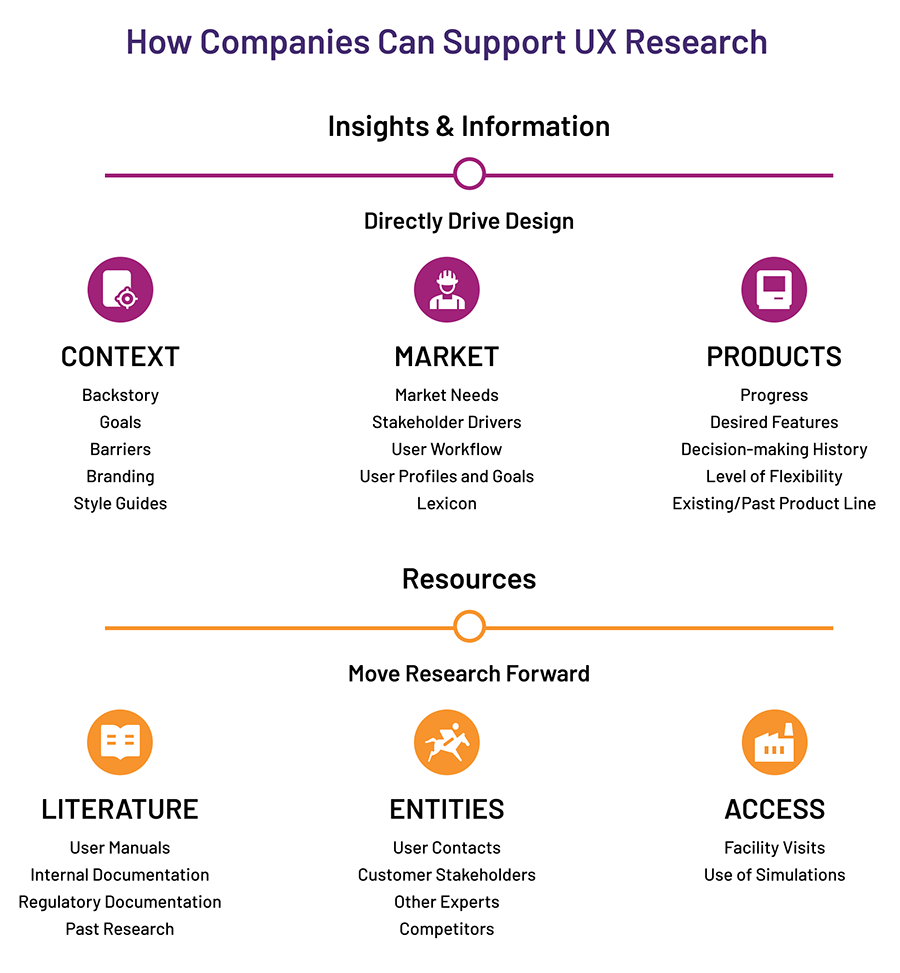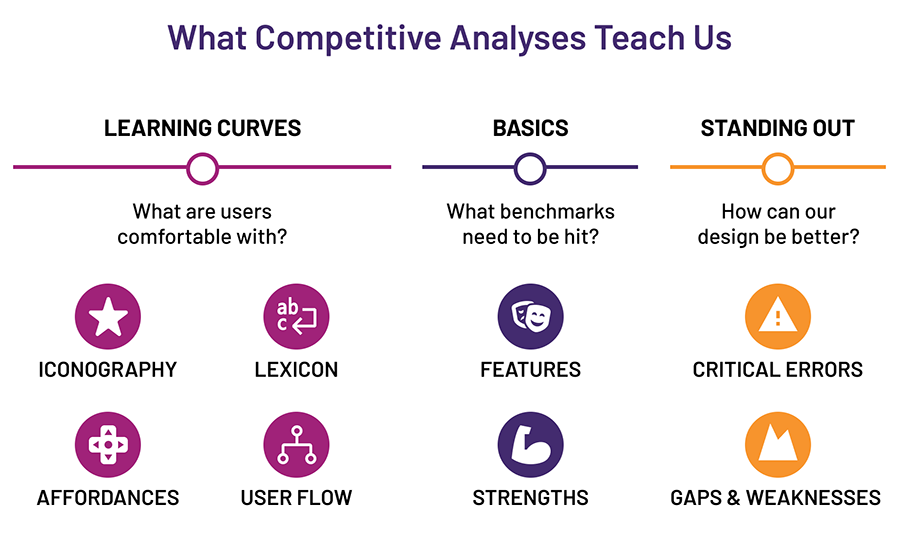
Prioritizing Discovery Research is Essential to Project Success
If you’re serious about creating a great product that truly meets the needs of users, conducting well-planned research at the start of product development is key. Up-front research provides critical insight that can serve as the solid foundation on which to build your design strategy. The perspective you and your design team will gain from conducting user research early in the development lifecycle will enable you to bring products to life in ways that will resonate with users.
Boston UX has put together a new series, The Foundation of Design: UX Research, to help you better understand what’s involved in the UX research process and how to take advantage of it for your own product development needs. In this introductory installment, we explore the initial research phase – discovery – with particular emphasis on the types of activities that can be conducted with minimal time and resources.
Getting Started
The discovery phase, optimally conducted at the start of the design process, forms a critical design foundation for creating relevant, applicable designs that tackle real-world problems. The focus of discovery is to define the questions, not the solutions.
In Think Like a UX Researcher, David Travis and Philip Hodgson build on the tenet’s of Sherlock Holmes in their assertion that, “The cost of focusing too early on product solutions, as many development teams do, is that you quickly lose sight of the problem you are trying to solve.” To avoid this, designers characterize assumptions as hypotheses that they need to prove or disprove, and then reformulate assumptions so that they are based in reality. This creates a solid foundation on which to build a design strategy.
Designers and their customers work together to couch shared assumptions about the needs of both end users and the overall market, and then identify research questions and prioritize the methods for answering those questions. By asking, listening, reading, watching, and learning, designers can fully empathize with users and understand their specific needs.
The discovery phase often pulls from a variety of nuanced resources – less tangible than quantitative data collection. Choosing activities depends on a number of factors, primarily time, resources, and device type. In designers’ earliest discussions during project kick-off meetings, they work with customers to identify and prioritize research needs and agree on methodologies.
Finding and interviewing users about their needs and workflows, or visiting sites where those users operate their devices, may simply not be feasible. Other discovery methods that are less time and resource intensive can be utilized instead. For instance, the design team can interview customers, read available literature, review existing and past product prototypes (if relevant), and analyze competing products.
Later in the design process, the UX team can conduct deeper, more intensive research activities involving primary research, such as usability lab studies or navigation pattern analysis. (These activities are intended to evaluate a design that has been at least partially developed or released.)
Regardless of the specific measures, an effective design team will continuously circle back with their customer to confirm or share findings, find explanations, and together reflect on what these findings mean for product design.
Leverage Customer Knowledge
Companies who are seeking to improve UX design know their users, their goals, their mission, brand, successes, decision making factors, corporate challenges, existing designs, competing products, you name it. As such, their intel becomes the foundation of their product’s design and gateway to richer research.
To support the design process, it is helpful for companies to share with their design team information that provides direct insights into design, as well as resources that can drive further research. This type of information is outlined in the chart below.

Review Existing Literature
The design team can further expand its understanding of users by studying a broad range of existing materials. For instance:
-
Regulatory documents may contain vital data that can inform design decisions and address usability requirements that may go overlooked otherwise.
-
User manuals often list and map functions that are included in existing product design. By examining these manuals, designers may uncover a concealed, yet commonly used, feature that requires multiple steps to access. By understanding this, the team can create a modified design that could increase the prominence of this feature, thus improving the UX.
-
User forums can be a treasure trove of information. Users flock to such groups to comment on the products they use, typically highlighting common complaints, as well as suggesting their desired solutions.
Learn from the Competition
Best practices in the discovery process involve examining and analyzing competing products. Before innovating, designers need to understand the landscape and language of a particular industry by studying what the competition is doing.
This is not intended to allow designers to simply parrot a competitor’s design, but rather to inform the strategy. This exploration may allow designers to facilitate gentle learning curves for users switching products and ensure that the standard features users expect are included in the product’s design. It also allows designers to identify ways to help the product and brand stand out among the competition by solving shortcomings or major oversights of other products in the market.
Designers can tap into the endlessly available resources, such as brochures, blogs, user forums, videos, manuals. Sales webinars, product demonstrations, training classes, user interviews, and promotional videos for competing products offer a wealth of information. For example, training videos can be particularly helpful in illustrating typical order of operations, anticipated points of confusion, and more.

Gain Insight from the Existing Design
When revamping an existing product, designers should explore any existing, interactive simulators, actual devices, or mockup screens that you can share. Conducting heuristic reviews, mapping user flows, and identifying included features are critical tasks. Designers will ask questions like:
- Are all seven steps actually necessary to execute this action?
- Is this automatic pop up relevant?
- Why is this term used in the interface?
By closely reviewing existing work, the design team can pinpoint shortcomings or pain points created by the original design, appreciate the complexity with which the original design team contended, and intuit goals that may not have been articulated. As a result, they can develop informed solutions that efficiently build upon strides already taken and ultimately deliver a better product.
Depending on the project and your needs, if a product has already been at least partially designed and developed, the discovery process can be abbreviated and more intensive testing and analyses can occur.
The Takeaway
Discovery research provides invaluable insights and, therefore, a strong foundation for a successful design. Prioritizing research at the outset of a project helps designers gain crucial insight and unlock design possibilities that enhance the user experience. Cutting corners on, or even – gasp – skipping discovery research may result in products that are irrelevant, problematic, and useless to both manufacturer and users. Skipping systematic research at the project start may also increase the potential for delays and unnecessary costs.
The bottom line is this: While the scope of research activities depends on available time and resources, early research provides designers with the insight to help the targeted product stand out in what might be a crowded and complex market.
In upcoming installments in The Foundation of Design: UX Research series, we’ll discuss primary data collection activities that can also occur in the up-front phase of design, as well as explore the types of testing and evaluative research that occur after preliminary design and/or product release. You can read more on UX on our blog.